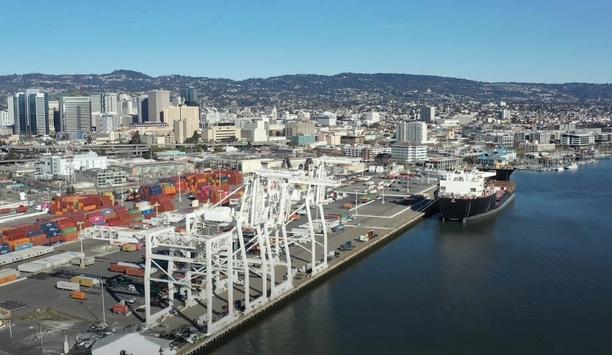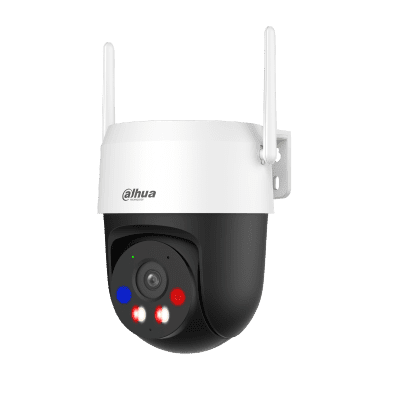 Efficient Pedestrian And Vehicle Access Control
Efficient Pedestrian And Vehicle Access Control
Certified According to ISPS
The port installation at Lübecker Hafen-Gesellschaft (LHG) received International Ship and Port Facility Security Code (ISPS-Code) certification on July 1, 2004. This code encompasses a wide variety of internationally binding measures designed to improve port safety. Similar to airports, for example, the approximately 600,000 ship passengers passing through Lübeck are required to go through a security gate before they are allowed to board their vessels. Their travel documents are checked carefully and suitcases and hand luggage are also inspected. And the tightened security at the port entry and access points provides detailed information on exactly who is on the port premises at any particular time.
Germany's Largest Port on the Baltic Sea
With a market share of 40 percent, Lübeck is Germany's biggest Baltic Sea port. Last year, 25.4 million metric tons of goods were handled here. The port's heavy traffic, with around 150 departures to 24 partner ports a week, contributes to Lübeck's success, along with the exceptional ability to handle roll-on/roll-off traffic. The A1 autobahn, the railway network operated by Deutsche Bahn and the Elb-Lübeck channel provide excellent connections for the delivery of the goods that come on site.
Consistent Video Surveillance
The public port facilities, operated by LHG (Lübecker Hafen-Gesellschaft mbH), include four zones with a total area of 120 hectares and 15 ship berths. Some 730,000 trailers and trucks and around 1,800 block trains move in and out of the facility each year. Almost 90,000 container units (TEU) are also transhipped here. To guarantee comprehensive port security and safety in such dimensions, LHG has opted for the consistent video surveillance of all the critical areas - and uses IP cameras from MOBOTIX.
Trailer Check

Security plays an absolutely crucial role in vehicle handling operations. With the trailer check system, one of the modules of the integrated port and logistics system (HIS) operated by LHG, trucks reporting in and out at the gate are scanned using advanced new systems and photographed from all sides by digital cameras as they pass through a portal, all at a speed of up to 30 km/h. All the data and photos are allocated to the corresponding booking information, archived and, if desired, made available to the shipping company online. This enables the port operators to determine, for example, whether damage to a vehicle occurred inside the port or whether the vehicle was already damaged on entering the port area. This also makes it virtually impossible to steal the trailers.
"We did run into difficulties, though, when we commissioned the original system at the Scandinavian quay," admitted Thomas Kapscha, an external employee who worked on the LHG scanner portal project for Lübecker Hafen-Gesellschaft's IT department. "In the winter, the sun was so low that the existing cameras didn't do their job properly; you couldn't see anything on the images. We tried changing the cameras' positions, but then they didn't focus on the license plates. That meant we needed additional cameras to help us solve the problem."
No Problem with Backlight
The decisive tip came from an IT service company, Conect Kommunikationssysteme GmbH that introduced the LHG supervisors to MOBOTIX camera technology. The system was then thoroughly tested and compared with rival solutions. "We discovered," said Thomas Kapscha, "that the IP camera from MOBOTIX was best-suited to our needs. The system was exceptionally easy to integrate with our existing network as well as with the scan portal software. The camera also offers excellent value for money and has no problems with backlight."
Different to most other cameras, MOBOTIX does not work with auto-iris lenses that darken important sections of the picture when there is backlight. This technology uses freely configurable exposure windows that allow you to control the exposure just the way you want it. As a result, the MOBOTIX cameras make sure that the photos taken of the license plates in the trailer-check system are always in focus, even when the sunrays are shining in at a less-than-perfect angle.
Less Work Involved

Once the cameras had been deployed successfully in the scan portals, it was clear that the MOBOTIX technology would also offer the ideal solution for implementing the more extensive video surveillance coverage required in order to obtain ISPS certification. In addition, the port operators are planning to gradually phase out current analogue systems and to replace them with IP cameras.
The solution will be used initially for pedestrian and vehicle access control. At Schlutop Terminal, which is not equipped with a scan portal, a total of six cameras - three each way - have been installed to photograph the front, rear and drivers of inbound and outbound trucks and trailers. This is necessary because the tractors and trailers generally have different license plates, and it is important to know exactly who is on site. "It's really useful in this case that the cameras can be controlled using a range of different signals rather than solely via the in-built video sensor," explained Thomas Kapscha. "The front camera is triggered by the access control system. It begins taking pictures when the barrier goes up. The rear camera goes on when the truck leaves the induction loop. And pictures of the driver are triggered by a network signal from the front camera. Compared to other IP systems, there is far less work involved in cabling and installing these cameras."
Plans for 40 More Cameras
At present, LHG has 25 MOBOTIX cameras in operation. The benefits are not limited to the documentation of damage to trucks and trailers only, but the cameras have also enabled LHG to bring a number of crimes to prosecution, including fuel theft, trespassing and vandalism. LHG is obviously very satisfied with the system since the company now has plans to deploy another 40 or so cameras.
















